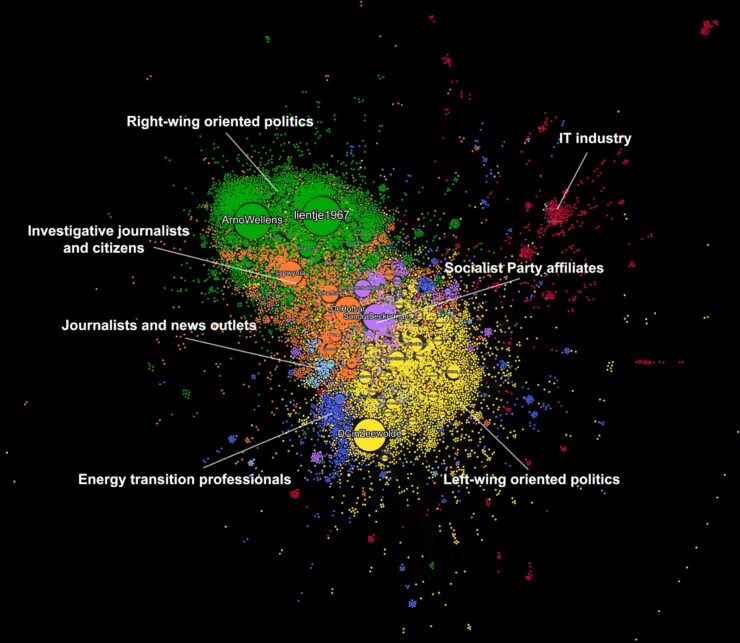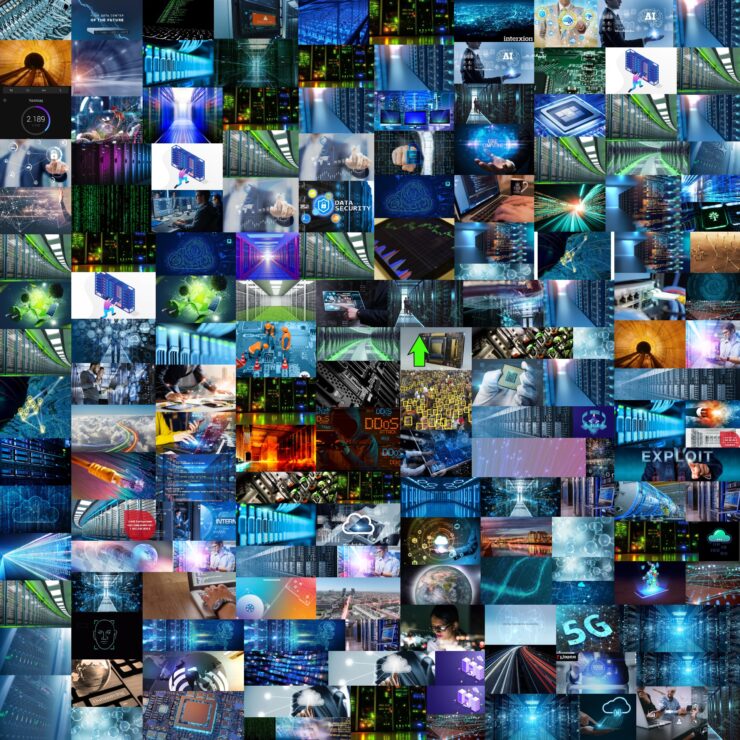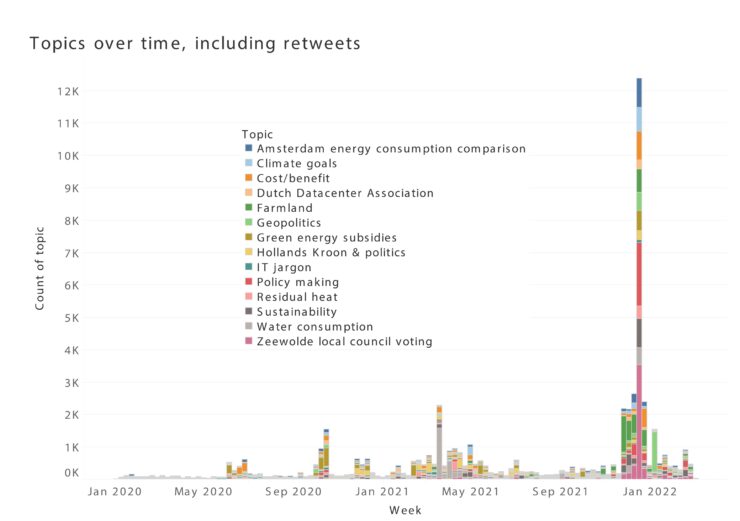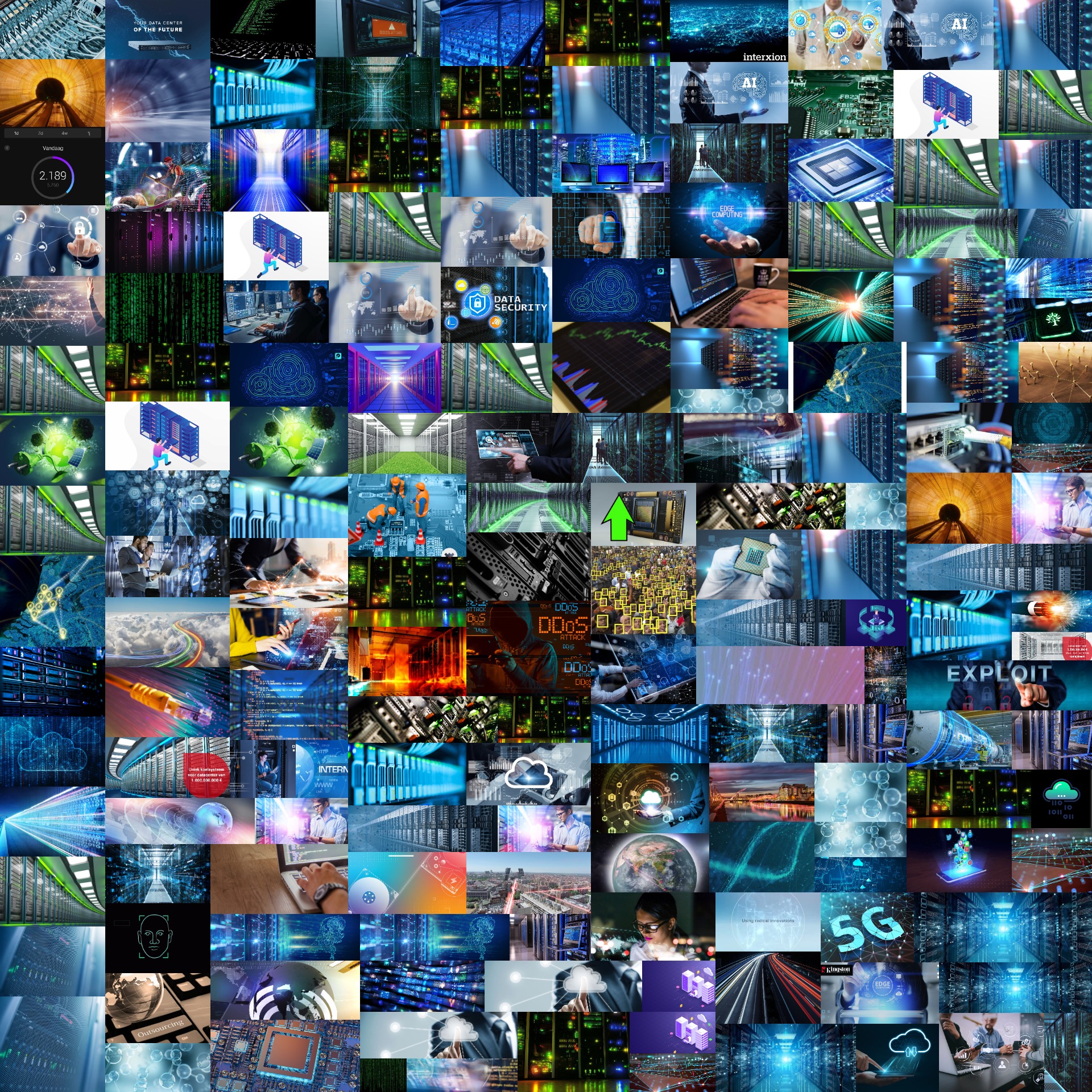Between Metaphors of the Cloud and Critical Questioning: Competing Data Center Imaginaries on Twitter
Team lead: Karin van Es
Team: Daan van der Weijden, Jeroen Bakker
What do you imagine when you hear the word “data center”? You might think of a hall filled with endless rows of server racks and flashing lights, or a massive grey box emerging from a grassland, or perhaps something even more abstract, like something out of a science fiction film. Chances are slim that you have actually set foot into a data center, but you will likely have a vivid image of what a data center is. These imaginaries of data centers turn out to be fields of contestation, where policy makers, activists and the IT industry fight over framings and narratives.
What are imaginaries?
We approach the Dutch data center debate through the lens of imaginaries, as explored in the work of Charles Taylor. Taylor defines the social imaginary as “the ways in which people imagine their social existence, how they fit together with others, how things go on between them and their fellows, the expectations that are normally met, and the deeper normative notions and images that underlie these expectations” (Taylor, 2002: 106). Sheila Jasanoff builds upon Taylor, emphasizing the increasing role that technology plays in society, and thus proposes sociotechnical imaginaries as an elaboration on Taylor.[E(1] Imaginaries here concern materialization through technology and requires examination of action and performance. Although seen as group achievements, Jasanoff points out that individual visions or that of small communities can become collectively held objectives and can therefore be useful to study (Jasanoff, 2015: 25).
Mapping imaginaries
To analyze the data center discussion, we turn our gaze to Twitter, a social media platform that functions as a gathering place where politicians, journalists, activists, citizens and scientists meet and debate – stakeholders who all play their part in shaping data center imaginaries. We collected nearly 70.000 Dutch tweets mentioning data centers that were posted between January 2020 and March 2022. This broad time period allows us to study how imaginaries surrounding data centers have changed over time, which is especially relevant considering this period saw multiple moments in which prominent media outlets brought the issue of data centers to attention of the broader public.
How do you then map an imaginary? We focus on three components: communities, text and images. Through a network analysis, we find clusters of users who tend to retweet each other’s content, often indicating a general level of agreement. This method reveals clusters of users tweeting about similar topics and viewpoints (Figure 1). The large group of accounts in the middle make up “the general public” – citizens, politicians, journalists and scientists. Their differences mainly stem from political viewpoints or the subjects they focus on.
The red cluster, which is rather remote from the network, represents the IT industry, i.e. the companies and people who are responsible for the construction and exploitation of the data centers. Their position in the network is remarkable. While they are highly invested in the subject of the debate, they are not engaging with other account clusters (community).
The only community that has any connections to the IT industry are the energy transition professionals (pictured in dark blue). This group consists of scientists and professionals specializing in the sustainable use of natural resources and the energy transition. We see members of this group appearing all over the network, showing that they engage with a wide variety of different voices. Close reading their tweets, it becomes apparent that these professionals actively seek out discussions about data centers, nuancing the debate by sharing sources and statistics.

Coming back to the IT industry, the disparity between the industry and the public persists when we look at the images that are shared within these communities. As visual representations of often impenetrable structures, these images play an important role in shaping our view of data centers. While most communities share images of the buildings themselves – for example aerial pictures taken with drones or photographs of the structures in the bigger landscape – the IT industry chooses to present a different kind of image. Through CGI-generated imagery and stylized pictures of endless server rooms devoid of human life, they conjure up a futuristic and ethereal representation of these infrastructures that suggest data to be immaterial, detached and in motion (Figure 2).
Interestingly, the most dominant type of image shared within the main ‘supercluster’ is not photographs, but rather screenshots from news articles and blogs. This underlines the important role that traditional media continue to play in the online sphere. Peaks in activity are visibly correlated to the publication of news stories by outlets such as Zondag met Lubach, De Telegraaf and NRC. Even more, plotting the results from a topic modelling analysis on a timeline, it becomes visible that these publications impacting which topics are being addressed (Figure 3).


Impacting practice through imaginaries
By studying the data center debate through the lens of imaginaries, we see how dominant imaginaries can be challenged. Initially the IT imaginary fuelled a public image of data centers celebrating innovation, economic growth and representations linked to the metaphor of the cloud. These representations supported ideas of stability, security, and objectivity, free from human interference. However, over time, we identify the emergence of critical questioning of the IT imaginary which impacted political decision-making in the Netherlands. Through several key publications by news outlets and the efforts of experts on Twitter, a new imaginary of data centers was established, one that understands data centers as entangled with the material world and resources (wind, water and land), but also debated in terms of human resources (jobs).
These imaginaries that exist and circulate beyond Twitter, impact practice. The municipal elections in March 2022 saw the local party Leefbaar Zeewolde double its seats and win the majority. They had campaigned specifically against the building of the hyperscale data center. As our research shows, their momentum was supported by a shift in dominant imaginaries surrounding data centers, towards a more critical and material vision.

